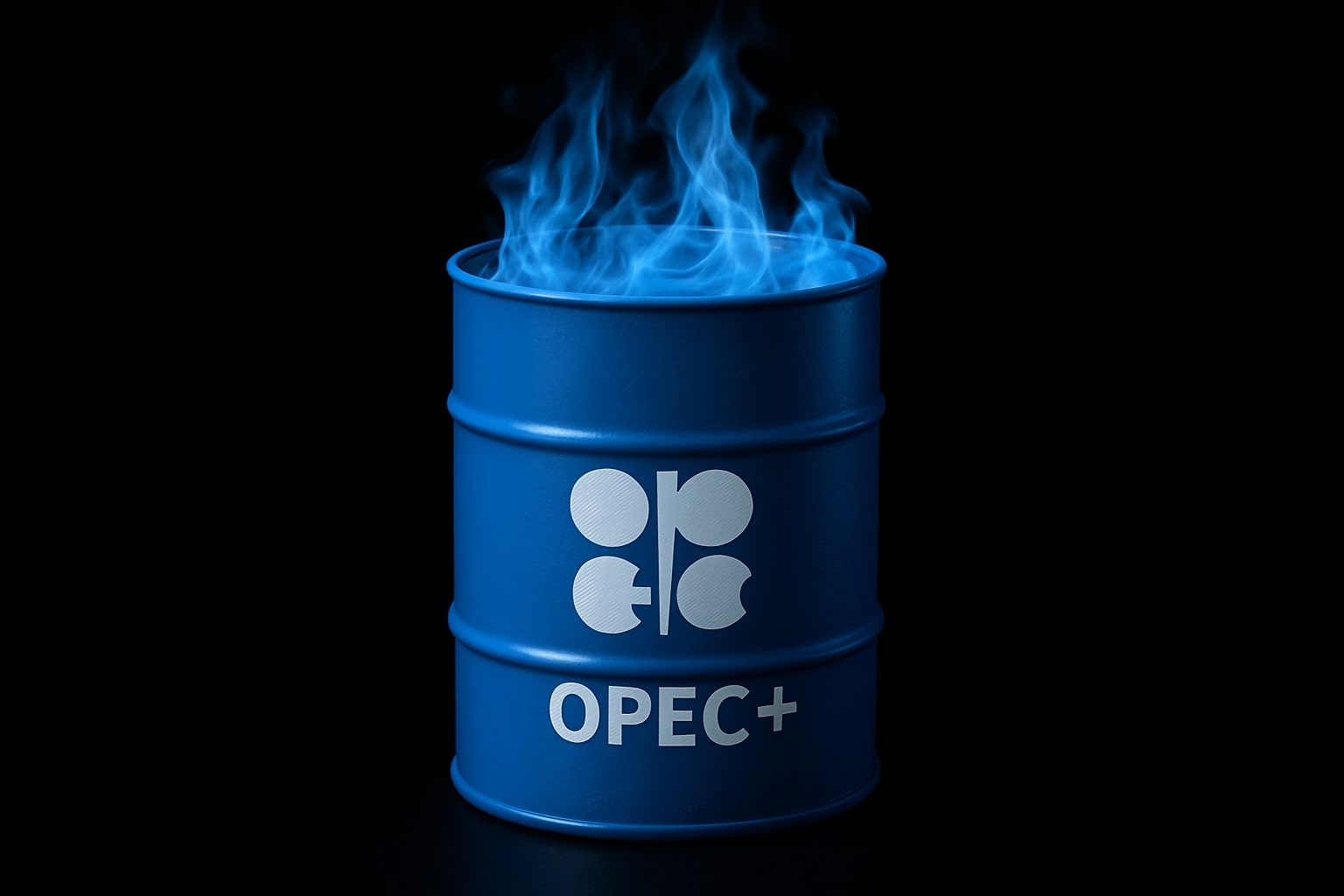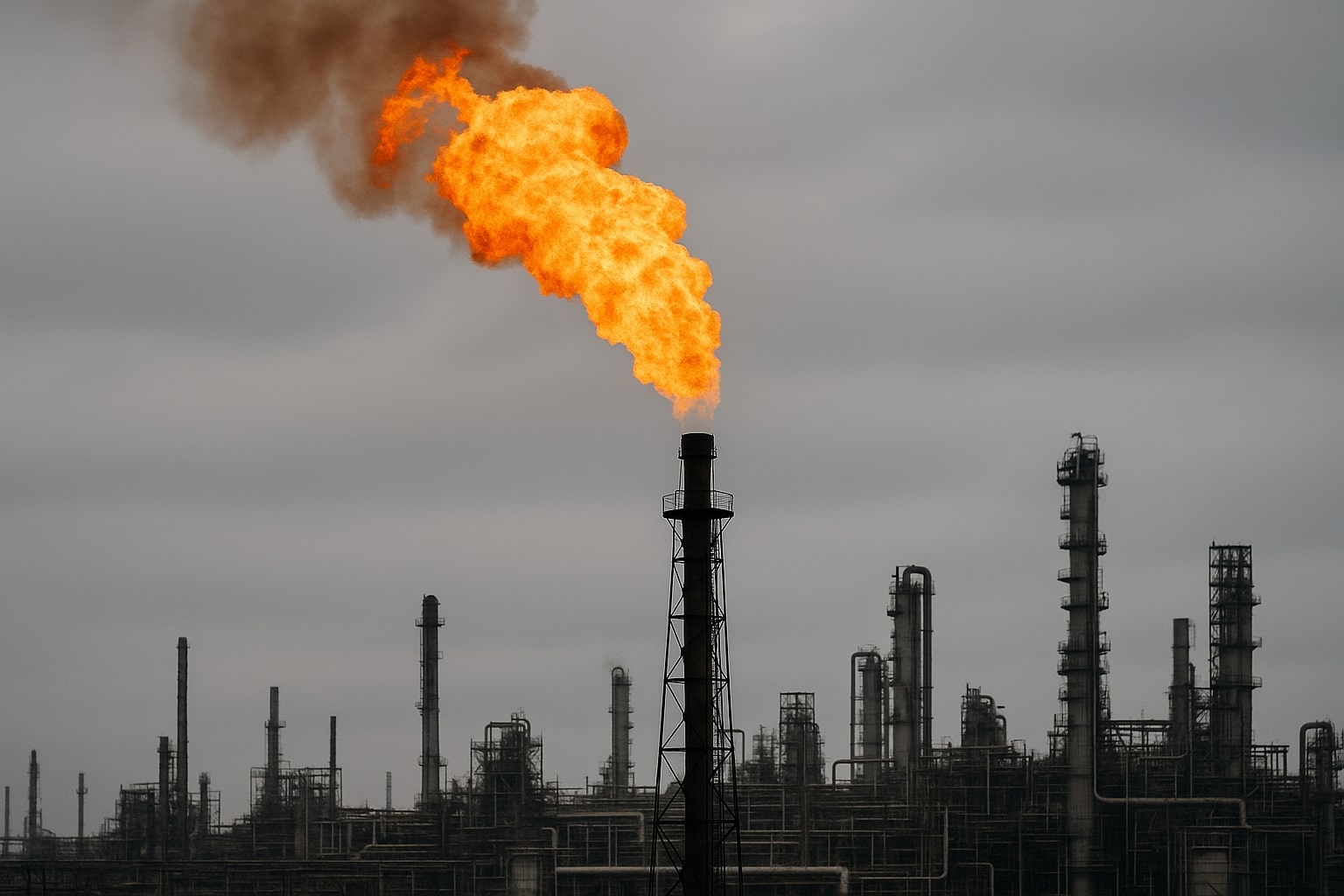
Oil Price Forecast: WTI at $65.64 and Brent at $69.18 Face OPEC+ Balancing Test
Asian imports rebound to 27.18M bpd, Saudi Arabia issues Sukuk debt, and U.S. tariffs reshape Russian crude flows, keeping oil in a $62–$73 range | That's TradingNEWS
WTI Crude (CL=F) and Brent (BZ=F) Rebound as Asia’s Imports Surge
WTI crude (CL=F) climbed 2.55% to $65.64, while Brent crude (BZ=F) rose 1.51% to $69.18, with gains reinforced by a rebound in Asia’s buying activity. Data showed that Asia’s August crude imports averaged 27.18 million barrels per day, up from July’s year-low of 24.91 million bpd and higher than a year earlier. China and India, which together drive more than a third of global oil demand, boosted imports after prices in May and June dropped into the low $60s per barrel. Opportunistic buying during that dip is now showing up in stronger August arrivals. However, forward flows could tighten again, as cargoes contracted after June’s spike above $80 per barrel during the Israel–Iran war will likely soften September imports.
Urals Oil and Russian Discounts Narrow Amid Tariffs and Caps
Urals crude is trading at $62 per barrel, narrowing its discount against Brent, which sits at $69.12. Since the G7’s $60 price cap was introduced in 2022, Urals has defied enforcement, trading above that level on 75% of days thanks to shipments through “dark fleets.” China remains the largest buyer, while Russia has kept its top-supplier position for India despite U.S. sanctions pressure. That dynamic shifted in late August when the U.S. imposed a 50% tariff on Indian imports of Russian oil, effective August 27, after New Delhi refused to scale back purchases. The EU and G7 allies will lower the threshold of the price cap to $46.50 per barrel, but enforcement remains patchy. This geopolitical tug-of-war is adding volatility across the curve, forcing traders to watch not just demand but also policy intervention.
Saudi Arabia’s Fiscal Stress as Brent Lingers Below $70
Saudi Arabia faces fiscal strain as Brent crude trades near $69, well below the estimated $90 per barrel price needed to balance its 2025 budget. Oil export revenues in April fell to $16.5 billion, down 21% year-over-year and the weakest in four years, as prices crashed 15% during the U.S. tariff blitz and OPEC+ production hikes. To finance its widening deficit, Riyadh is again tapping debt markets, issuing new tranches of Sukuk bonds. Investors placed $15 billion in orders by midday, showing global demand for Saudi debt remains strong despite oil’s downturn. Brent has lost 8% year-to-date, raising questions about how long Saudi can sustain spending on diversification projects while simultaneously defending market share.
OPEC+ Strategy and the Market Balancing Act
Speculation ahead of the OPEC+ meeting points to a likely rollover of current quotas, with no major cuts expected. The bloc faces a difficult balancing act: U.S. production set a record in 2024 and continues to beat weekly estimates in mid-2025, while Russia is keeping exports strong to Asia. Brent futures at $68.43 for November delivery and WTI October contracts at $64.91 show that markets are anchored in the mid-$60s to high-$60s range, struggling to break higher. The 200-day EMA sits at $62 for WTI and $70.52 for Brent, marking key technical pivot levels. For WTI, a sustained break above $66.50–$67.00 could target $70, while support lies at $62.00. Brent must clear $70.50–$73.00 to escape the consolidation band.
India and China: Winners of Cheaper Crude
India saved $12.6 billion on its oil import bill this year by leveraging discounted Russian crude, while China has expanded purchases from both Russia and Saudi Arabia. Together, their opportunistic buying strategies amplified August’s rebound in Asian imports. Yet this reliance comes at a geopolitical cost. Trump’s tariffs directly target India’s Russian inflows, and future U.S. policy may pressure Chinese refiners as well. India’s imports from sanctioned suppliers such as Nayara Energy are under scrutiny, with Saudi Arabia and Iraq suspending shipments in response to Western sanctions compliance issues. These disruptions highlight the fragility of Asia’s supply chain, where opportunistic savings clash with policy risks.
Geopolitical Shocks Add to Supply Volatility
Drone strikes forced Sudan to shut down production in the Heglig basin, cutting about 30,000 bpd. Separately, Houthis claimed a missile attack on an Israel-linked oil tanker in the Red Sea, and Russia’s Baltic fuel ports remain impaired after drone damage, extending repairs for months. Syria exported crude for the first time in 14 years, signaling the return of sanctioned barrels. These disruptions underscore how geopolitics are keeping risk premiums alive even as overall supply is abundant. Meanwhile, Russia and China advanced the Power of Siberia-2 pipeline, aiming to add 50 bcm of gas annually to Chinese buyers, reshaping long-term flows in Eurasia.
Technical Market Setup for Oil
The structure of oil futures reflects an uneasy balance. WTI (CL=F) rebounded strongly off $62, with intraday highs near $65.80, but resistance remains layered until $70. Brent (BZ=F) at $69.12 faces stiff barriers at $70–$73, where the 200-day EMA is positioned. Gasoline prices rose sharply, up 3.61% to $2.04 per gallon, highlighting refining tightness despite soft crude benchmarks. Mars US crude trades at $71.28, while Bonny Light collapsed 2.84% to $78.62, showing regional disparities. OPEC’s basket held at $69.65, flat on the day. Technical charts still flash consolidation rather than breakout, with RSI readings neutral and traders waiting for clarity from OPEC+ and macro signals like U.S. nonfarm payrolls.
Final Positioning on Oil
With WTI at $65.64 and Brent at $69.18, the market is caught between opportunistic Asian demand and mounting geopolitical and fiscal risks. Tariffs, sanctions, and OPEC+ caution keep prices capped, while support at $62 for WTI and $68 for Brent prevents deeper selloffs. Oil’s near-term path depends on whether buyers can sustain momentum above technical ceilings or whether renewed oversupply pushes benchmarks back toward spring lows. The geopolitical premium is alive, but structural oversupply remains a ceiling on rallies.
That's TradingNEWS
Read More
-
Is Nvidia (NVDA) Stock a Buy? +47% Upside Target as CUDA 13.1 and Rubin CPX Redefine the AI Race
08.12.2025 · TradingNEWS ArchiveStocks
-
XRP Price Forecast - XRP-USD Jumps to $2.08, Regulatory Clarity Fuel Rally Toward $3
08.12.2025 · TradingNEWS ArchiveCrypto
-
Oil Price Forecast - Oil Prices Drop Below $60 — WTI (CL=F) and Brent (BZ=F) Face Weak Demand and Fed Pressure
08.12.2025 · TradingNEWS ArchiveCommodities
-
Stock Market Today: Nasdaq Jumps to 23,627, Dow Jones at 47,774 as PSKY and IBM Stock Dominate Wall Street
08.12.2025 · TradingNEWS ArchiveMarkets
-
GBP/USD Price Forecast: Pound Builds Toward 1.35 on Fed Dovish Shift and U.K. Growth Revival
08.12.2025 · TradingNEWS ArchiveForex



















